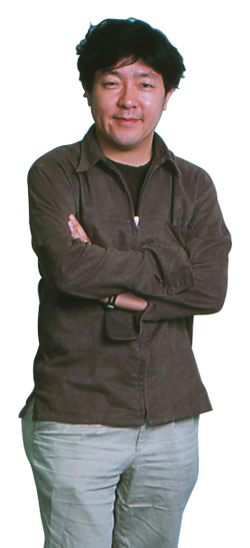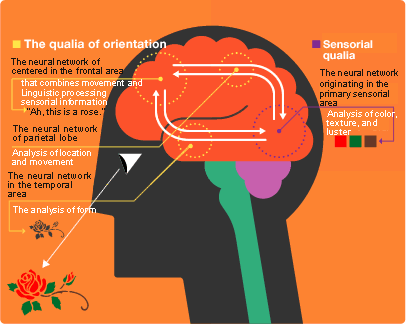 I was captivated when I saw the compact and lovely appearance of the JT Biohistory Research Hall. Whenever I think about how consciousness is created from the brain, I am mesmerized by the immense conceptual world of neural networks and information theory. Perhaps I tend to be forgetful of the readily apparent wisdom that the brain is a living organ; this wisdom is secret, yet identifies our essence. I was captivated when I saw the compact and lovely appearance of the JT Biohistory Research Hall. Whenever I think about how consciousness is created from the brain, I am mesmerized by the immense conceptual world of neural networks and information theory. Perhaps I tend to be forgetful of the readily apparent wisdom that the brain is a living organ; this wisdom is secret, yet identifies our essence.
One hundred billion neurons are activated, creating consciousness filled with qualia. During the evening of my discussion with Keiko Nakamura, I became convinced that this is one manifestation of the phenomenon of life. When a butterfly floats in the sky, its small nervous system receives nearly imperceptible information from the environment, including light, shadow, temperature, odors, and wind movements. It quivers and ripples, and this is reflected in its subtle control of flight. While they may not yet have the experience of verbalization as in human consciousness, there are definitely traces of the long, continuous steps of evolution that lead to our present spirit.
At the JT Biohistory Research Hall, I was first shown samples of the nervous systems of different insects, heard the story of the genealogy of carabids, and conducted a dialogue with Ms. Nakamura in a room in which I somehow sensed the presence of biohistory in the decorations. Without this series of events, my brain may not have followed the path it did during the dialogue. Both of the history of biology and the history of the brain of a single human being are filled with singular events. That’s why I love it so much. |

 I was captivated when I saw the compact and lovely appearance of the JT Biohistory Research Hall. Whenever I think about how consciousness is created from the brain, I am mesmerized by the immense conceptual world of neural networks and information theory. Perhaps I tend to be forgetful of the readily apparent wisdom that the brain is a living organ; this wisdom is secret, yet identifies our essence.
I was captivated when I saw the compact and lovely appearance of the JT Biohistory Research Hall. Whenever I think about how consciousness is created from the brain, I am mesmerized by the immense conceptual world of neural networks and information theory. Perhaps I tend to be forgetful of the readily apparent wisdom that the brain is a living organ; this wisdom is secret, yet identifies our essence.